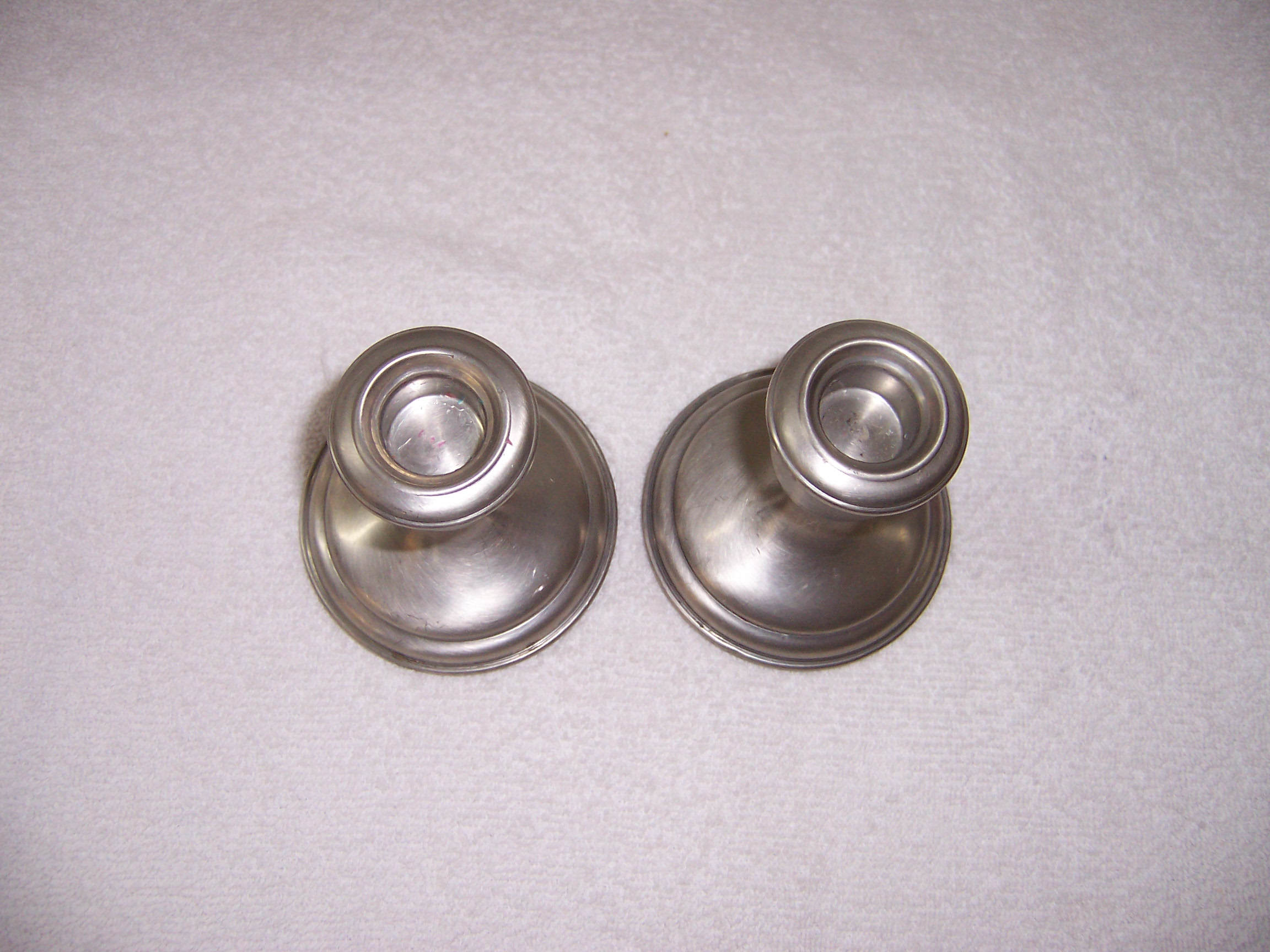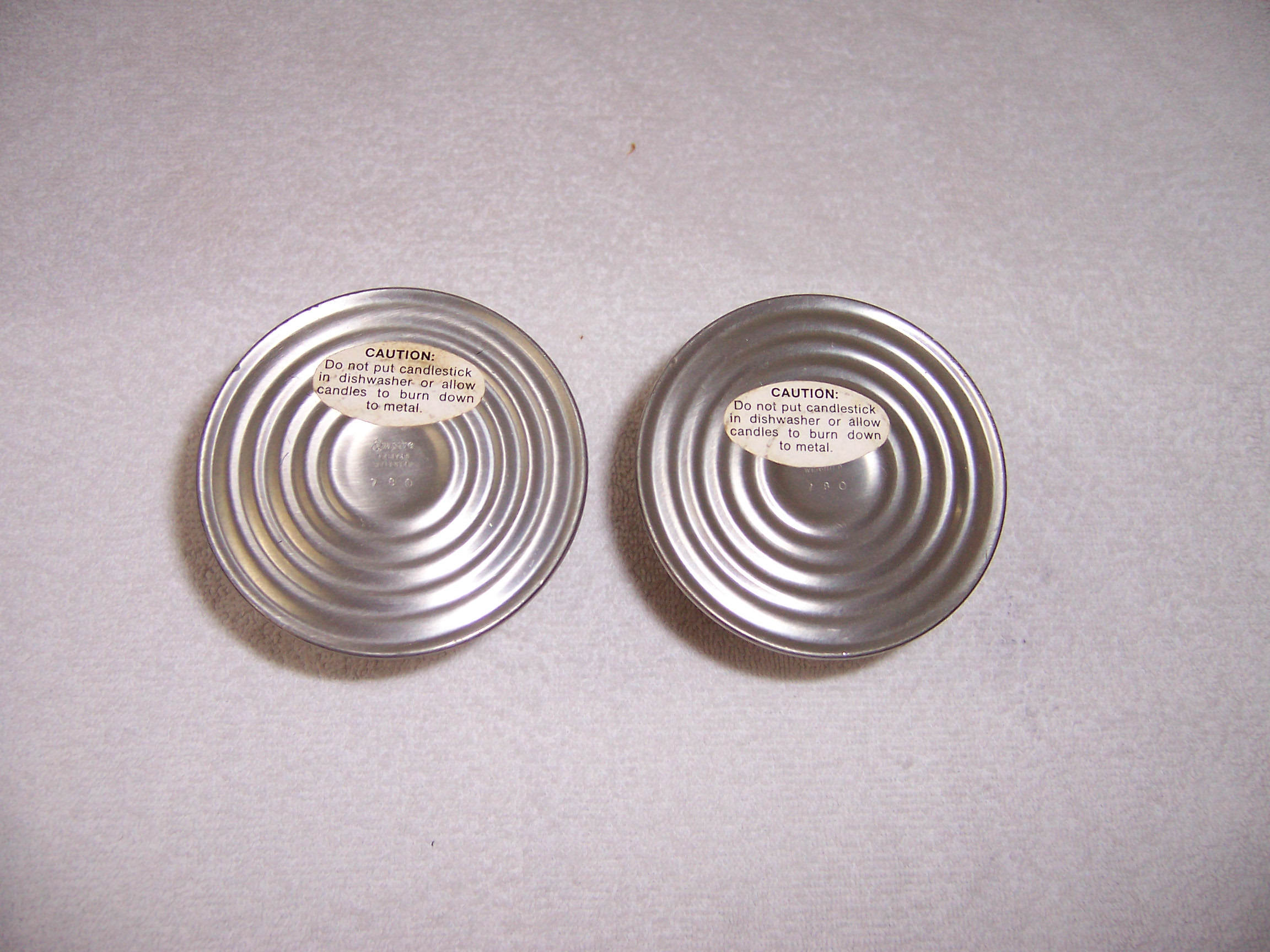Description
Empire Weighted Pewter Candle Holders in good condition. They measure 3.5″ high x 3.5″ diameter base with a 1.75″ diameter top.
The earliest known piece of pewter is an Egyptian vessel found at Abydos and dating from approximately 1400 B.C. It is not known just how common the use of the metal was at this time, but certainly by the Roman era it was in regular use. Britain’s plentiful supply of the raw materials of pewter, (lead and tin), made it a valuable addition to the Roman empire. Many items of Roman pewter survive, but with the demise of Roman Britain it seems that the material fell largely out of use, with the Saxons only seeming to make very limited use of the metal.
The medieval period saw a gradual increase in the use of pewter. The monk Theophilus described its use in his early 12th century treatise ‘On divers Arts’, although for the next couple of hundred years the high status of pewter restricted its use largely to the Church. By the late 13th and 14th centuries it was finding its way into high status secular households and its use gradually filtered down through the social classes until by the 16th century most households would possess at least some pewter. At this time pewter was a vital part of Englands economy, by the 15th century becoming second only to wool in the countries exported products. However this importance would not last; through time its value gradually decreased, until by the 18th century it was being displaced by cheap tinplate, pottery and glass.
Turning on a pole-lathe
turning on a pole-lathe c.1395
The production of pewter in the medieval period was controlled by the Pewterers Guild whose task it was to control and maintain the quality of Pewterers work. The London based Pewterers Guild gained their first ordinances from the city authorities in 1348, and in 1474 they were granted a Royal Charter by King Edward IV, becoming the Worshipful Company of Pewterers, and giving them the right to control the manufacture of pewter throughout England.
The Company enforced the standards to which various types of item should be made. Three types of pewter were used. ‘Fine’ pewter was used for flatwares and the regulations stated that this metal should consist of 91-97% tin with the addition of copper to harden the tin. The second grade was ‘lay’ metal and this could contain up to 16% lead. A third grade of pewter known as trifling metal was permitted for the manufacture of toys and other small items. This metal could contain quite large quantities of lead. Today all pewter is lead free, containing tin, copper and either antimony or bismuth.
Although the Worshipful Company of Pewterers influence over the industry waned from the 18th century onwards and eventually having few real links with the trade, the formation in 1970 of the Association of British Pewter Craftsmen once again established the traditional link between pewter craftsmen and the Worshipful




